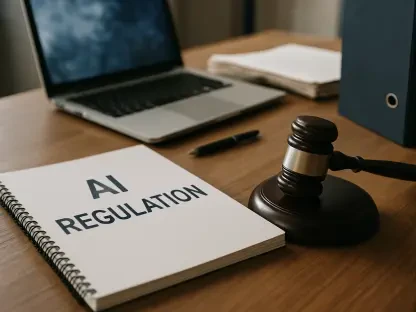In today’s fast-paced business environment, communicators are confronted with a landscape brimming with complexities and challenges they must adeptly navigate. Sofia Khaira, an authority in diversity, equity, and inclusion, brings her wealth of expertise to bear on these issues, helping businesses refine their talent management and development strategies. Her insights are invaluable for those seeking to foster inclusive and equitable work environments.
Reflecting on a recent roundtable discussion, key themes emerged, including the delicate balance of managing uncertainty, leveraging AI in communications, and the crucial role of building trust amidst external scrutiny. Sofia provides her expert perspective on these pressing issues and shares strategies for how communicators can lead effectively in these areas.
What key challenges do communicators face today in managing change, crisis, and growth?
Communicators are grappling with the intertwined dynamics of change, crisis, and growth, each of which can significantly impact a company’s trajectory. It’s about anticipating the unforeseen while remaining agile and adaptable. Often, communicators are not included early enough in the decision-making process, leading to ripple effects that can erode trust and negatively impact company culture. We face the ongoing challenge of ensuring our voices are heard in planning stages to help steer outcomes positively.
Can you elaborate on why “ambiguity” is considered the dirtiest word in communications?
Ambiguity breeds confusion and breeds mistrust, which are antithetical to effective communication. In our role, ambiguity can cause a breakdown in the intended message, leading to misunderstandings and a loss of stakeholder confidence. By continuously improving our skills to manage uncertainties, we can safeguard an organization’s trust and help drive growth.
How can communicators maintain internal trust when responding to external scrutiny?
The key lies in being transparent and consistent with messaging. While we must respond to external pressures, it is equally vital to keep internal audiences informed and aligned. By fostering a culture of open dialogue internally, we can preempt misunderstandings and ensure our stakeholders feel informed and involved, even during difficult periods.
What role does AI play in the evolving communication landscape?
AI is becoming an integral part of communication strategies by providing tools to synthesize vast amounts of data and generate actionable insights. Communicators can use AI to streamline processes and enhance engagement through personalized content. However, it’s important to recognize the risks, such as loss of human touch and potential data biases, while leveraging the convenience and precision AI tools offer.
What strategies can communicators use to demonstrate ROI to executive leadership?
To effectively communicate value to the executive team, tie communication efforts to metrics that matter to the business. This could include linking activities to key performance indicators (KPIs). Providing analyses with a clear point of view, rather than just raw data, helps demonstrate how communication initiatives drive business outcomes and protect the organization’s reputation.
How do communicators decide which issues demand a response and which don’t?
Deciding on response priorities involves evaluating the potential impact of the issue on the organization’s reputation and stakeholder trust. It’s about understanding where silence might create a vacuum for misinformation to flourish and gauging the real implications of public perceptions. The decision to respond should always be strategic, aiming to reinforce trust and credibility.
What is the “spider web” approach mentioned in the roundtable, and how does it help in crisis management?
The “spider web” approach is about leveraging interconnectedness within an organization to foresee and address potential issues. By listening and engaging with different parts of the business, communicators can create a network of insights that allows them to detect and respond to emerging crises in a timely manner. This interconnected perspective aids in maintaining a comprehensive understanding of the business climate.
How do communicators balance the need for transparency with the reality that some might not believe them during a crisis?
During a crisis, transparency is non-negotiable, but it’s also essential to prepare for skepticism. Building credibility before a crisis occurs lays the groundwork for trust. Consistent messaging and sticking to facts can help mitigate disbelief. It’s critical to engage consistently and empathetically, understanding the concerns and fears of different stakeholders.
How are communication teams reorganizing themselves in response to new challenges and expectations?
Reorganization often involves shifting away from traditional roles towards more dynamic and integrated functions, such as moving from emails to face-to-face conversations. This shift enhances narrative control and engagement. Some teams are rebranding themselves as “employee engagement consultants,” emphasizing a broader role in shaping employee experience beyond mere communication.
How can communication teams ensure they are being heard at the C-suite level?
Being heard at the C-suite level requires communicators to frame their contributions in business terms that resonate with executives. This includes demonstrating how communication efforts align with business goals and influence key outcomes. Sometimes, allowing leaders to experience the consequences of ignoring communication advice can also highlight its strategic value.
Can you discuss an instance where strategic communication helped avoid a potential crisis?
In one scenario, a breaking internal story was managed strategically by providing a media outlet with an embargoed exclusive. This move bought time to inform employees, thus preventing a morale issue and allowing the communication team to manage the narrative. Such strategic foresight can significantly mitigate the fallout from potential crises.
How are communication teams using metrics to enhance messaging and track trust scores?
By employing metrics to monitor the effectiveness of messaging, teams can optimize communication strategies. Trust scores, for example, provide a lens through which we can measure stakeholder confidence over time and make proactive adjustments to maintain or rebuild trust. Metrics help teams remain agile and informed in their communication efforts.
In what ways are communicators shifting from being mere “mouthpieces” to strategic voices in a company?
Communicators are increasingly seen as strategic partners in shaping narratives and policies rather than simply delivering messages. By becoming “navigators of ambiguity,” we advocate for clarity and strategic direction, which positions us as integral players in decision-making processes that impact the entire organization.
What advice would you give to communicators aspiring to lead with impact in today’s fast-paced business environment?
Stay curious and continuously seek learning opportunities. Build alliances across the organization to ensure that communication strategies are aligned with business objectives. Finally, practice empathy and active listening to foster trust and encourage open dialogues. These strategies will help you not only lead but also inspire change in your organization.









